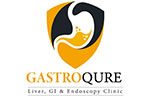Acid reflux treatment
Acid reflux, also known as gastroesophageal reflux disease (GERD), is a common digestive disorder characterized by the backward flow of stomach acid into the esophagus. While surgical interventions are available for severe cases, many individuals can manage their acid reflux symptoms effectively through non-surgical treatments. In this article, we will explore various non-surgical options that can help alleviate acid reflux symptoms and promote overall digestive health.
1. Lifestyle Modifications:
a. Dietary Changes: Avoiding trigger foods such as fatty and spicy foods, citrus fruits, caffeine, and carbonated beverages can help reduce acid reflux symptoms. Opting for smaller, more frequent meals and avoiding eating close to bedtime are also beneficial.
b. Weight Management: Maintaining a healthy weight can alleviate pressure on the stomach, reducing the likelihood of acid reflux. Regular exercise and a balanced diet are key components of weight management.
c.Elevating the Head of the Bed:
Raising the head of the bed by using bed risers or placing a wedge pillow under the mattress can help prevent stomach acid from flowing back into the esophagus during sleep.
d. Behavioral Changes:
Avoiding Tobacco and Alcohol: Both tobacco and alcohol can worsen acid reflux symptoms. Quitting smoking and limiting alcohol consumption can significantly improve digestive health.
e. Stress Management: Stress can exacerbate acid reflux symptoms. Engaging in stress-reducing activities such as exercise, meditation, and relaxation techniques may be beneficial.
2. Medications:
a. Antacids: Over-the-counter antacids provide temporary relief by neutralizing stomach acid. However, they do not address the underlying cause of acid reflux and may not be suitable for long-term use.
b. H2 Receptor Blockers: These medications reduce the production of stomach acid, providing longer-lasting relief compared to antacids.
c. Proton Pump Inhibitors (PPIs): PPIs are potent acid suppressors that can effectively manage acid reflux symptoms. They are available both over-the-counter and by prescription, but long-term use should be monitored by a healthcare professional.
3. Endoscopic treatment options for acid reflux typically involve procedures aimed at improving the function of the lower esophageal sphincter (LES), the valve that prevents stomach acid from flowing back into the esophagus. Some common endoscopic treatments for acid reflux include:
a.Endoscopic Fundoplication- GERDX Device used for endoscopic plication, transmural sutures are applied at the gastro-esophageal (GE) junction thereby reconstructing the gastric cardia and create a barrier that reinforces the LES and helps prevent acid reflux.
b.Stretta Procedure: Stretta is a minimally invasive procedure that uses radiofrequency energy to strengthen and improve the function of the LES.
c. Transoral Incisionless Fundoplication (TIF): TIF involves using a device inserted through the mouth to create a valve at the top of the stomach, reducing acid reflux.
d.Anti-reflux mucosal ablation (ARMA) is a minimally invasive endoscopic procedure used in the treatment of gastro Esophageal reflux disease (GERD). During ARMA, spray coagulation or argon plasma coagulation used to ablate the gastric mucosa at the junction of the esophagus and stomach create controlled thermal injury to the mucosal lining of gastric mucosa on the lesser curvature, leaving a small part on the greater curvature. This injury leads to scarring and subsequent tightening of the LES, reducing acid reflux.
The benefits of antireflux mucosal ablation include:
1. Cost-effectiveness: It is a day care procedure and generally does not involve significant costs compared to other procedures for GERD treatment.
2. Good results: Antireflux mucosal ablation has shown positive outcomes in reducing reflux symptoms. The procedure creates scarring, leading to tighter walls between the esophagus and stomach, which helps prevent acid reflux.
Antireflux mucosal ablation is highly effective for individuals with documented significant reflux based on 24-hour pH monitoring. Patients undergoing this procedure are advised to avoid oily and spicy substances and may be prescribed antacids and proton pump inhibitors (PPIs) for a period of time.
Another option for GERD patients is GERDEX, which could be an alternative treatment approach.
The recovery time for antireflux mucosal ablation is typically around 2 to 3 days, and it is considered a standalone procedure. It is generally covered by insurance. However, it's important to verify coverage with the specific insurance provider beforehand.
However, there are some minor risks associated with the procedure, such as bleeding which can be controlled and potential over-tightening occasionally.
It's recommended to consult with a gastroenterologist or a specialist in gastrointestinal disorders to determine the most appropriate treatment approach for acid reflux.
Dr Kapil Sharma specialised in endoscopic treatment of Acid Reflux specially Anti reflux mucosal ablation and GERDX
| Tags: |
